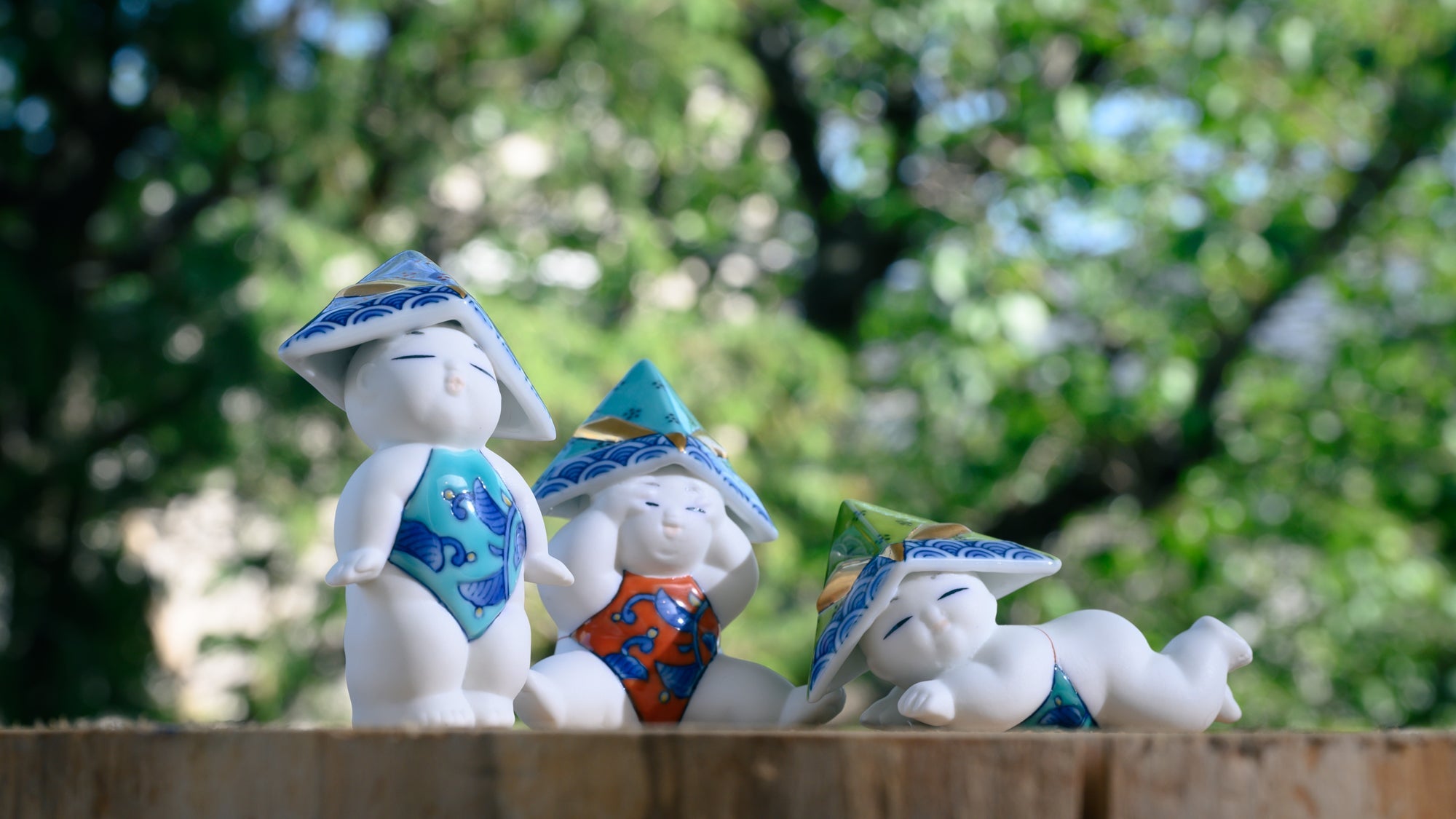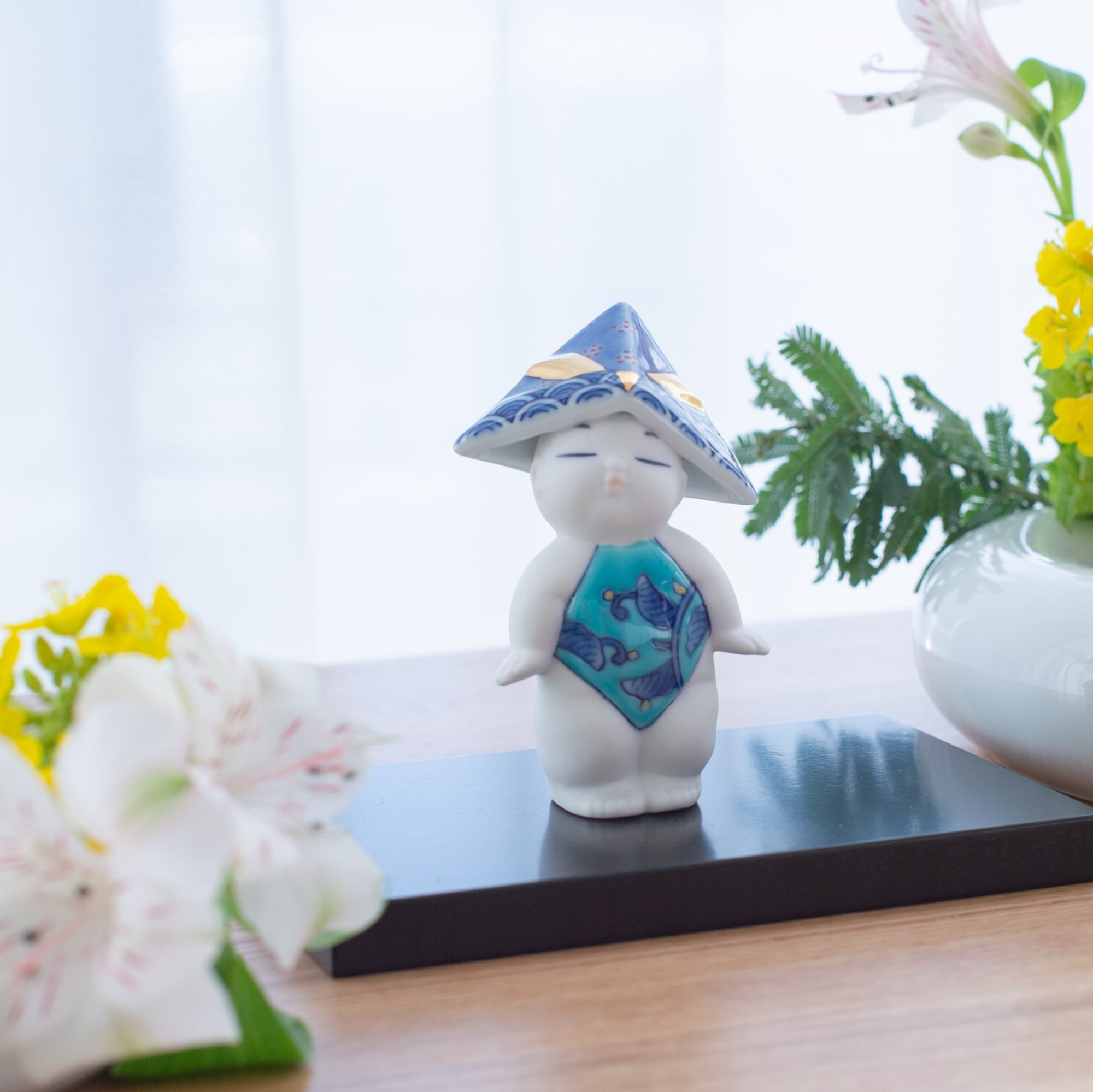
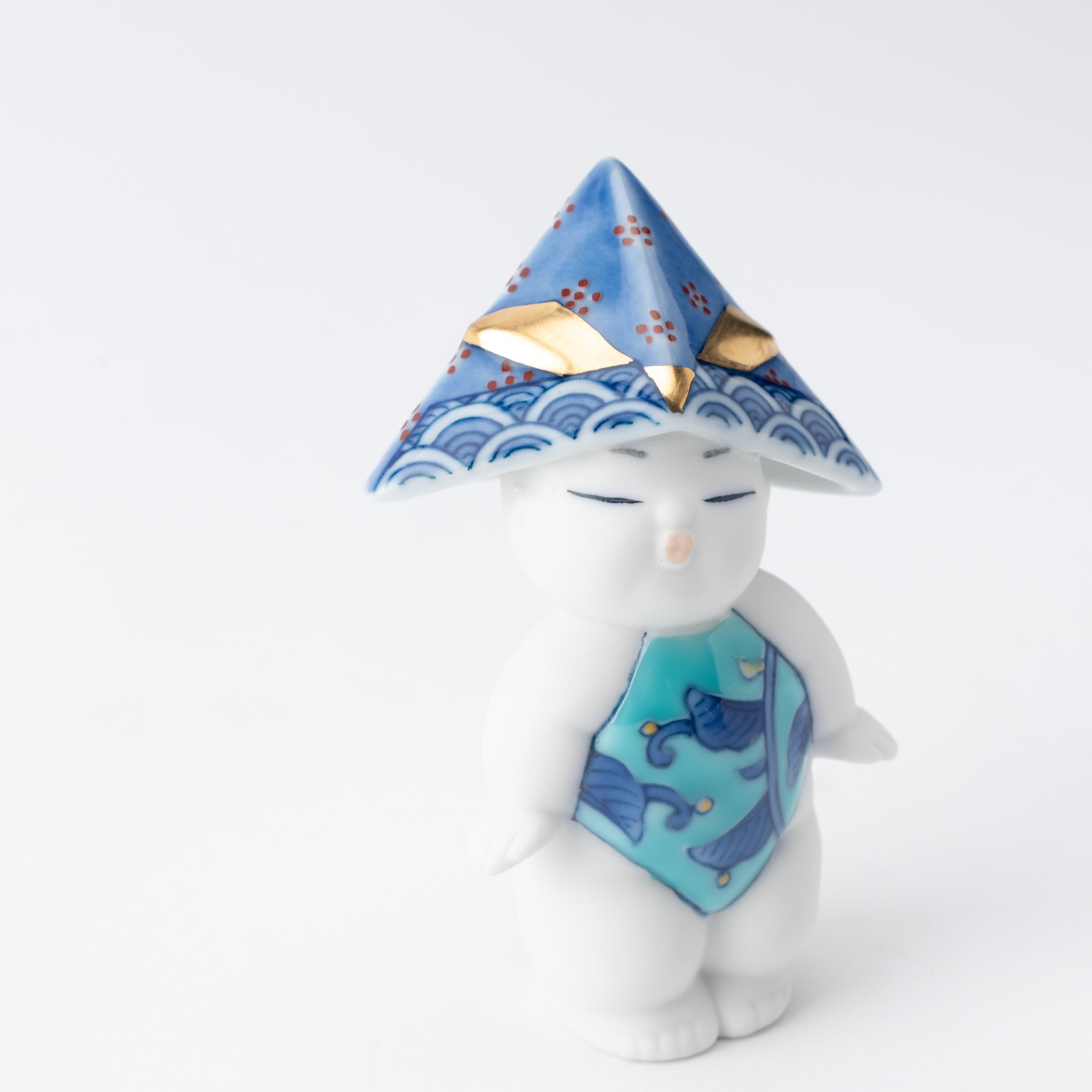
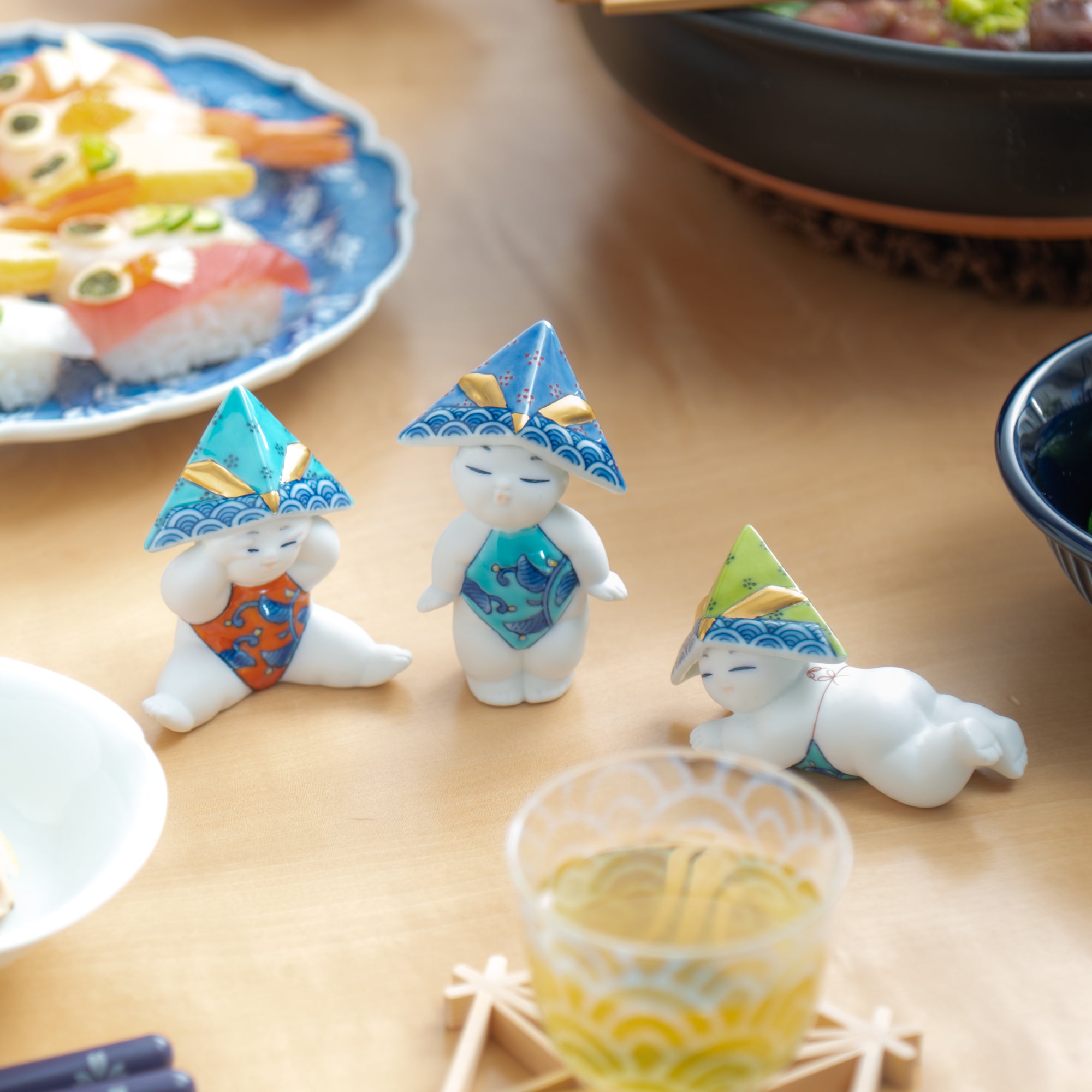
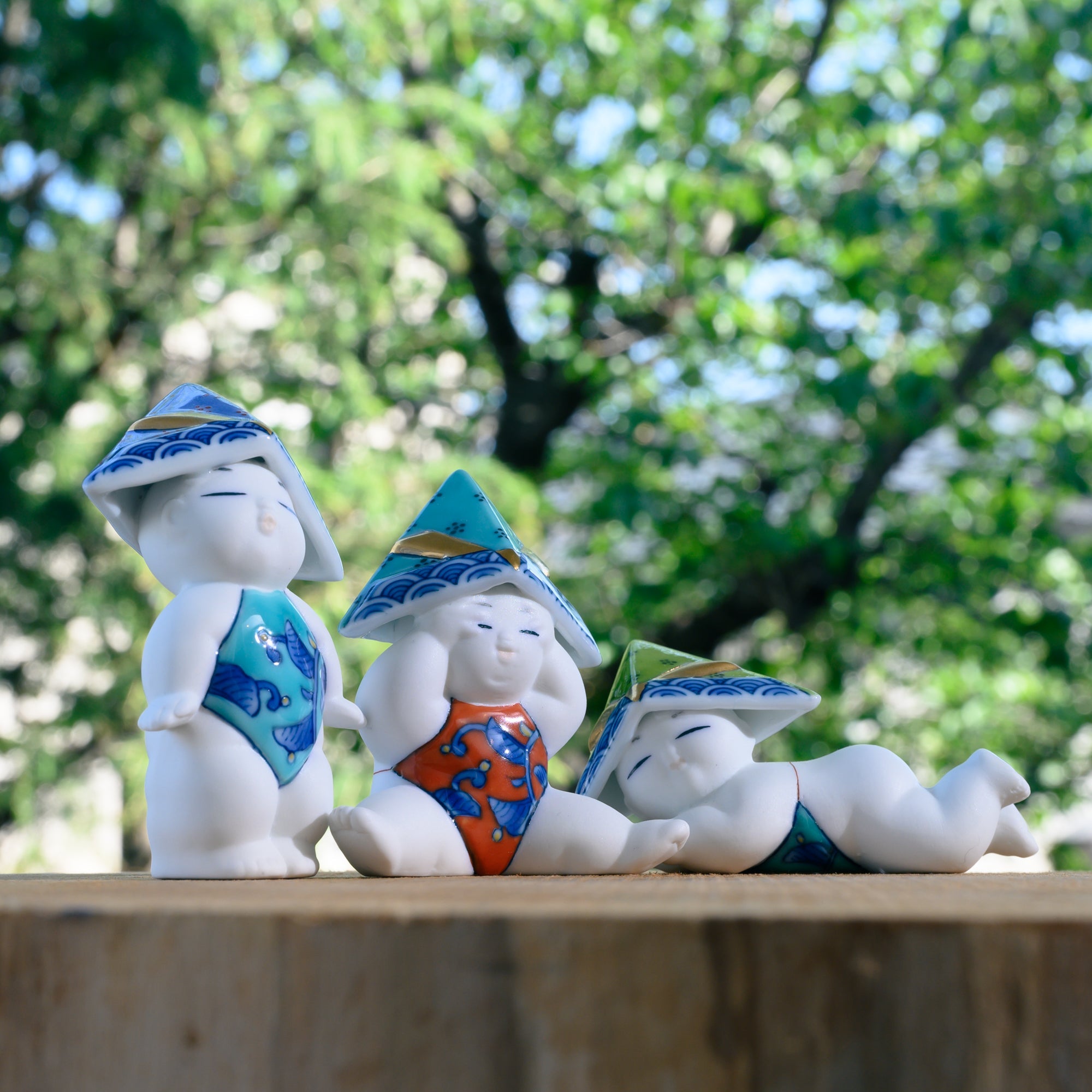

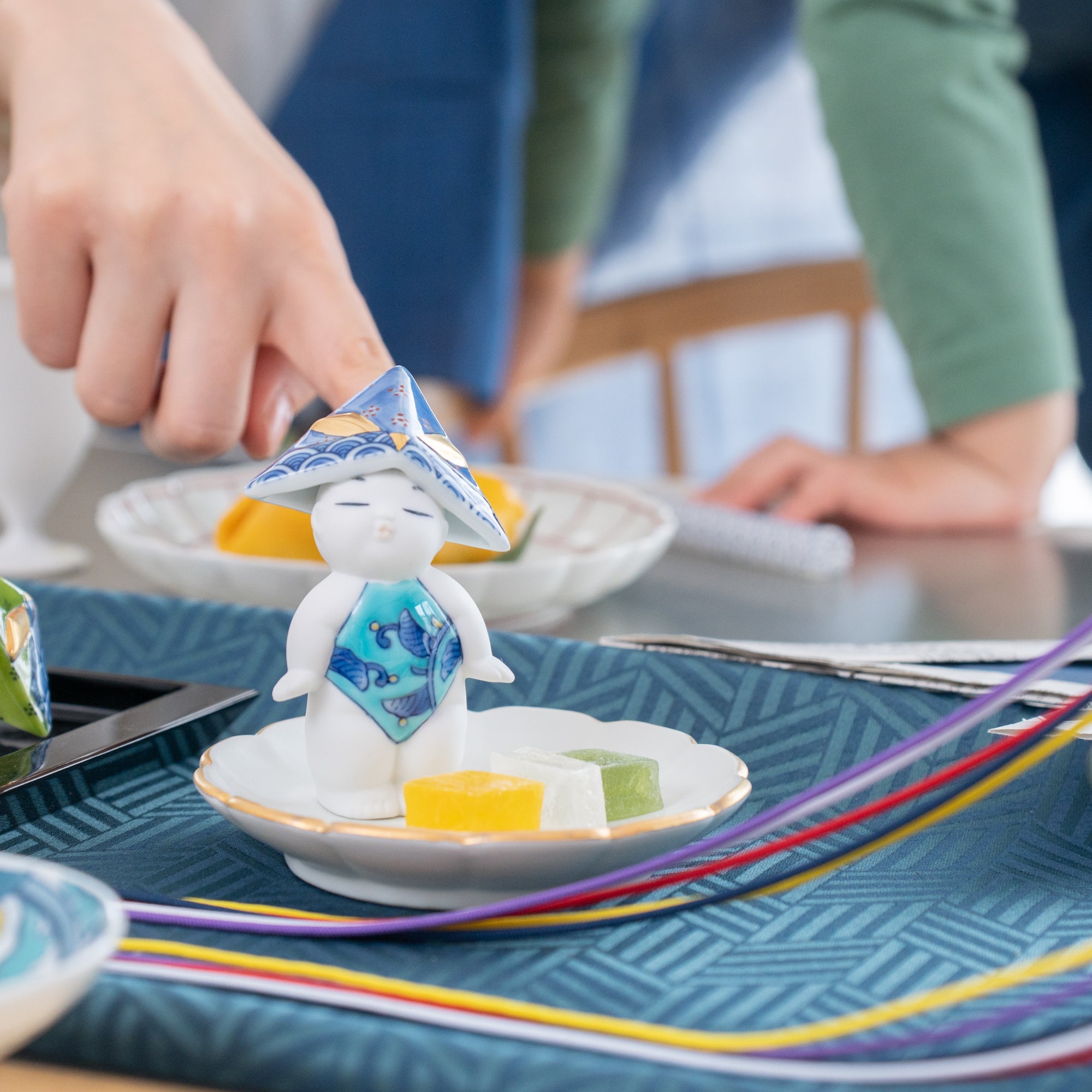
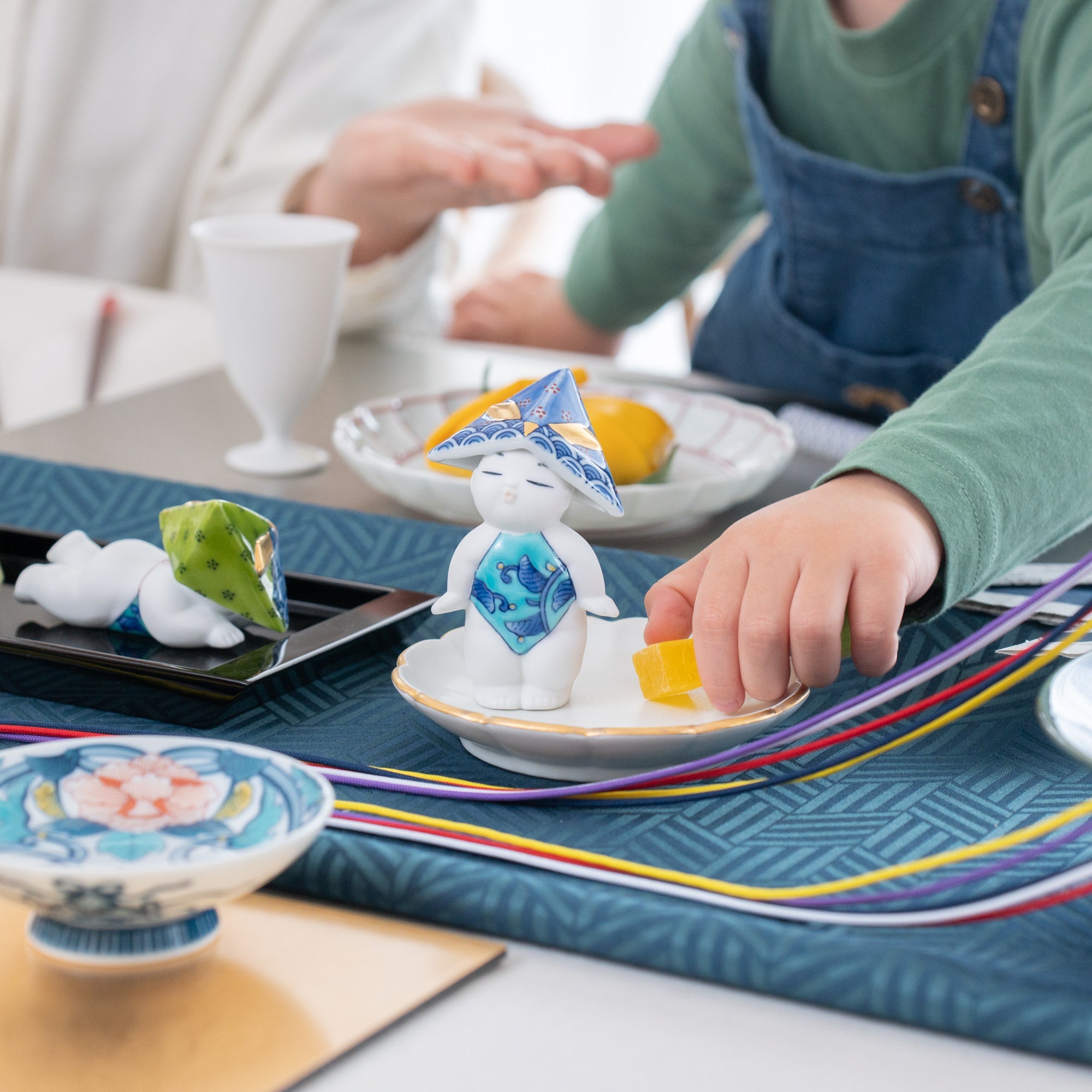
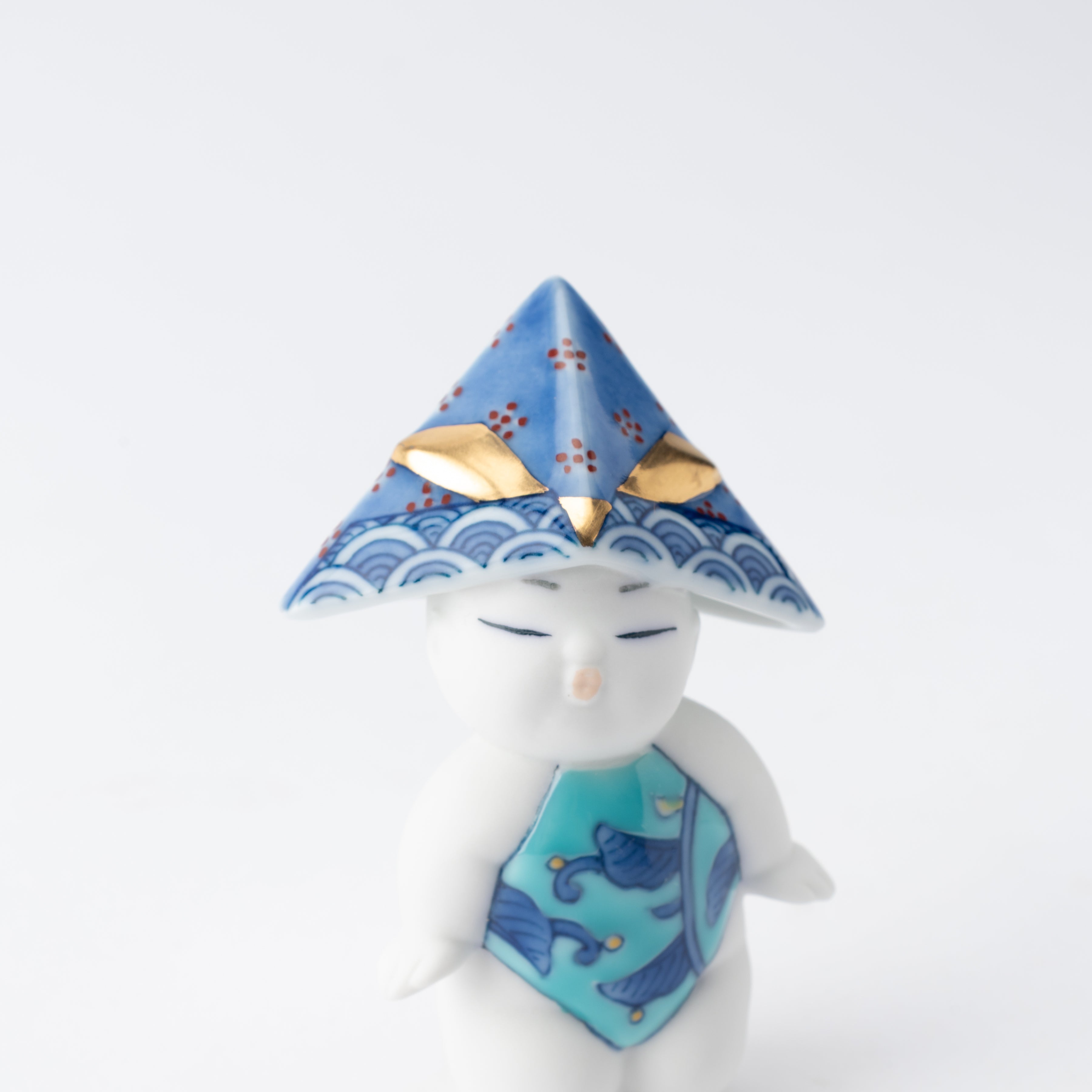
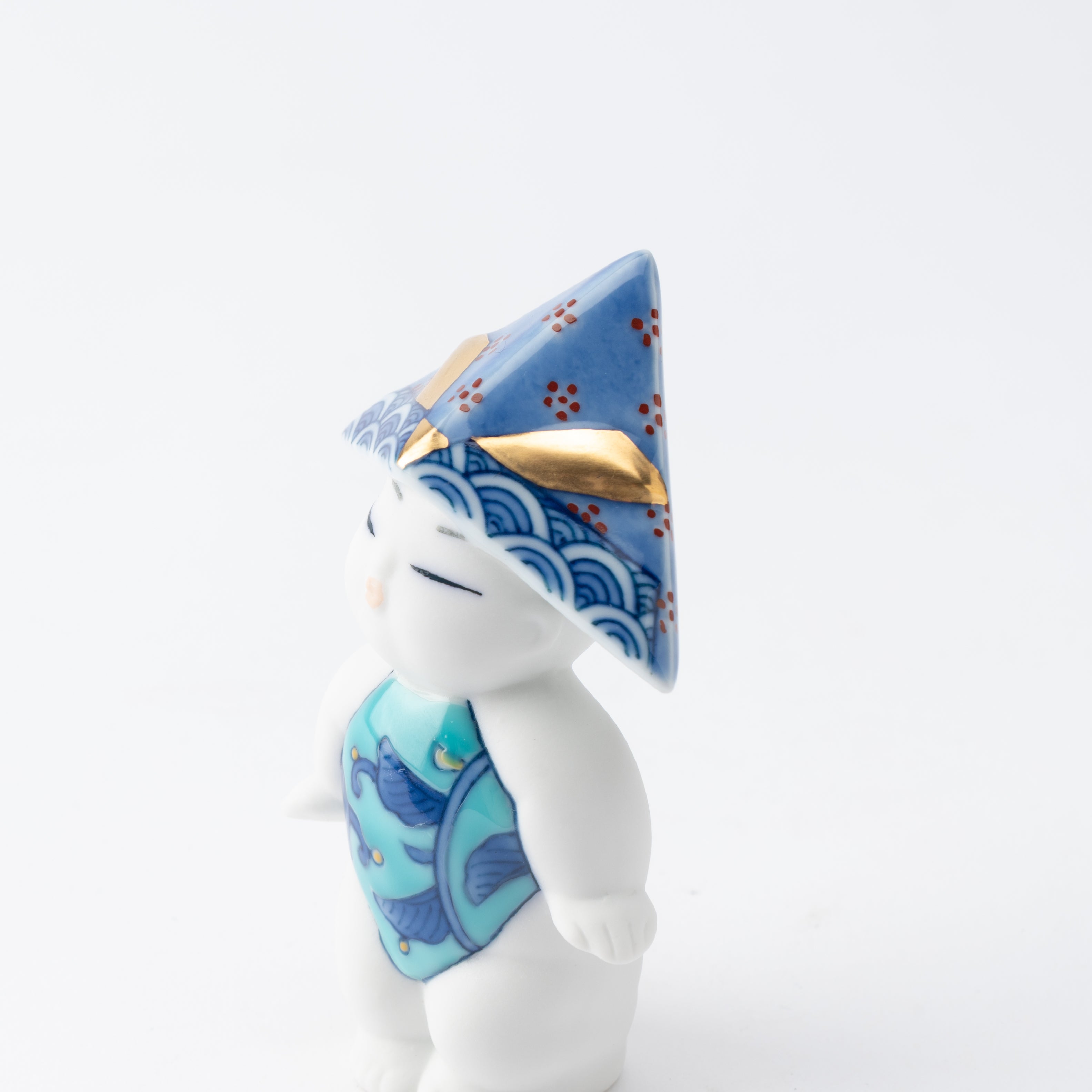
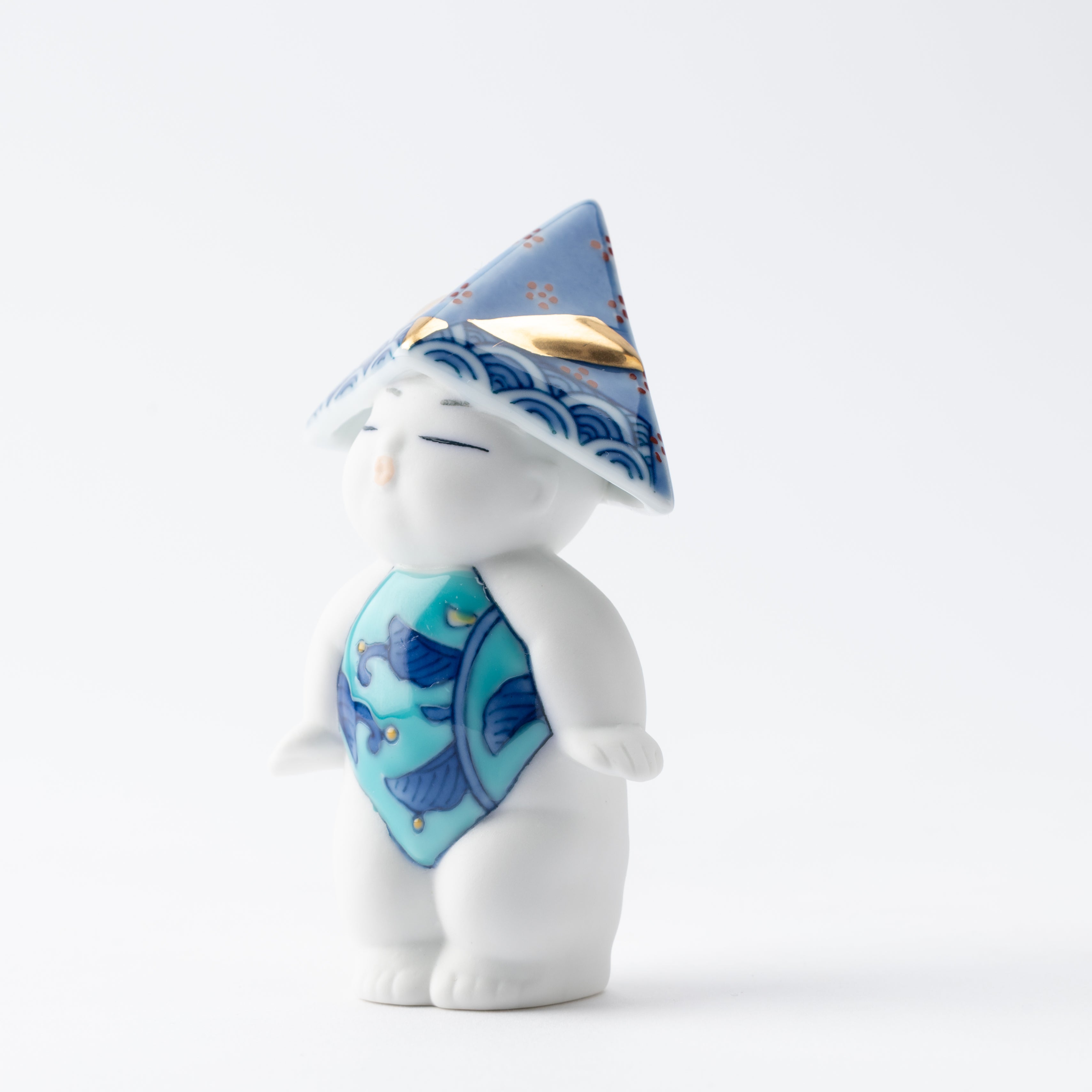
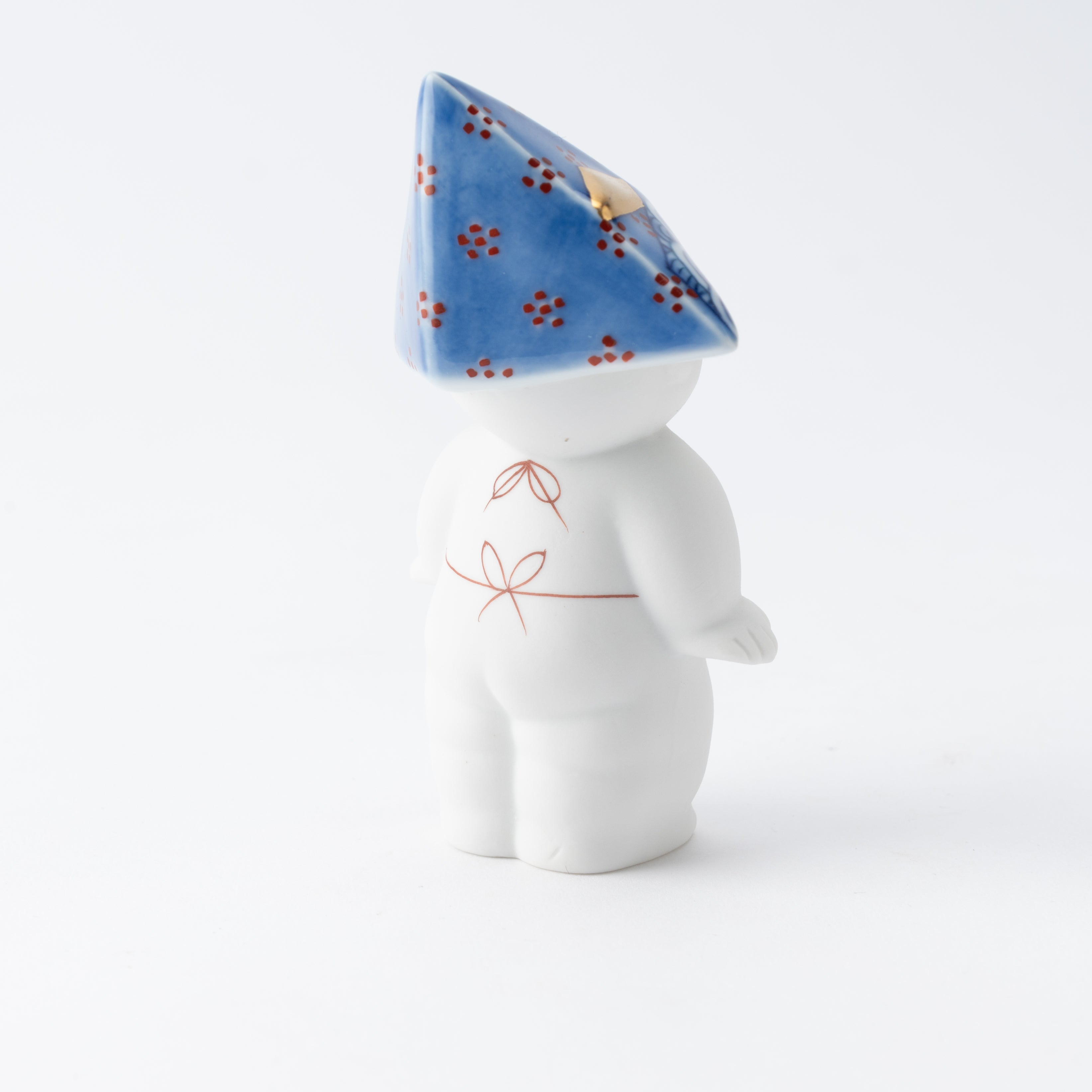
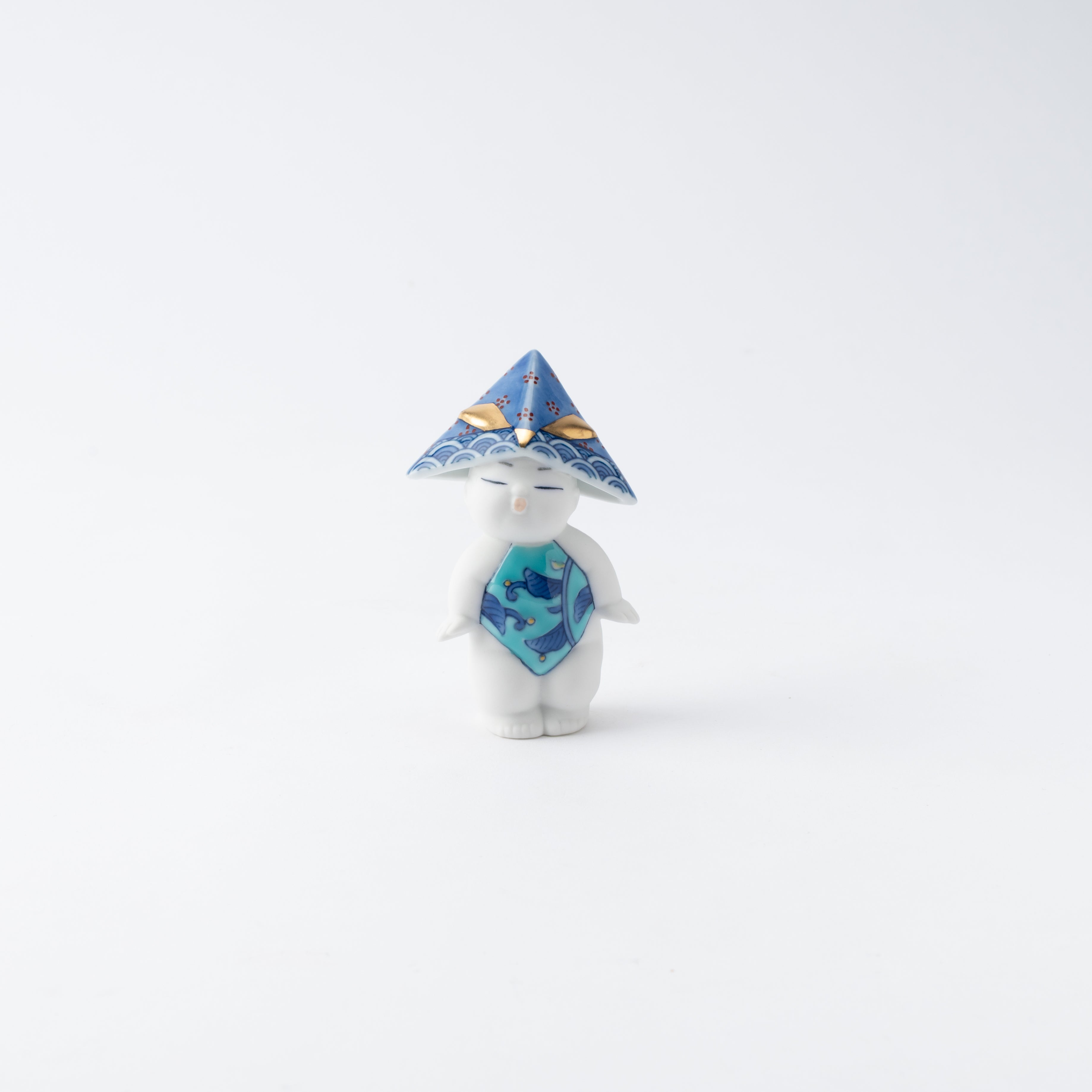
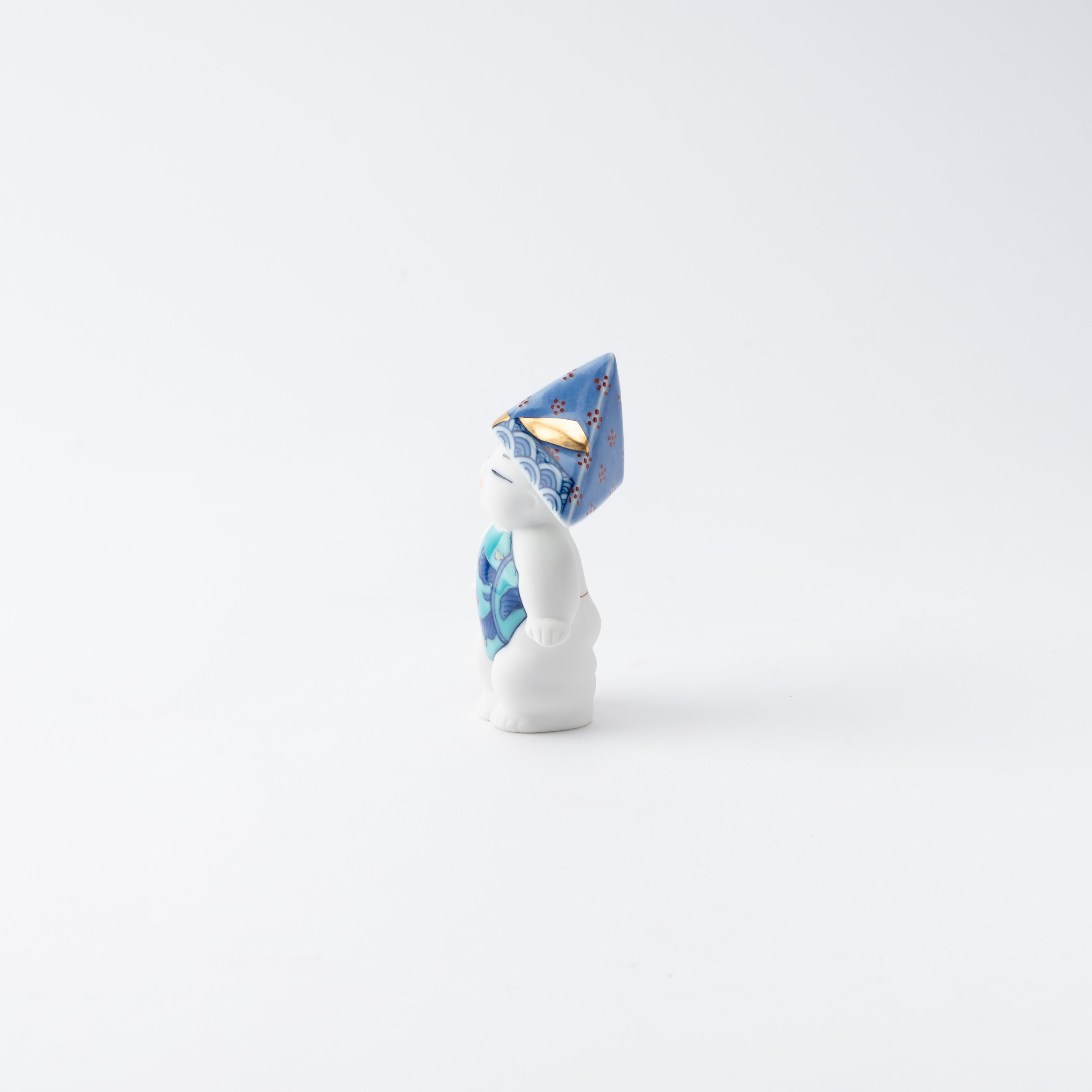
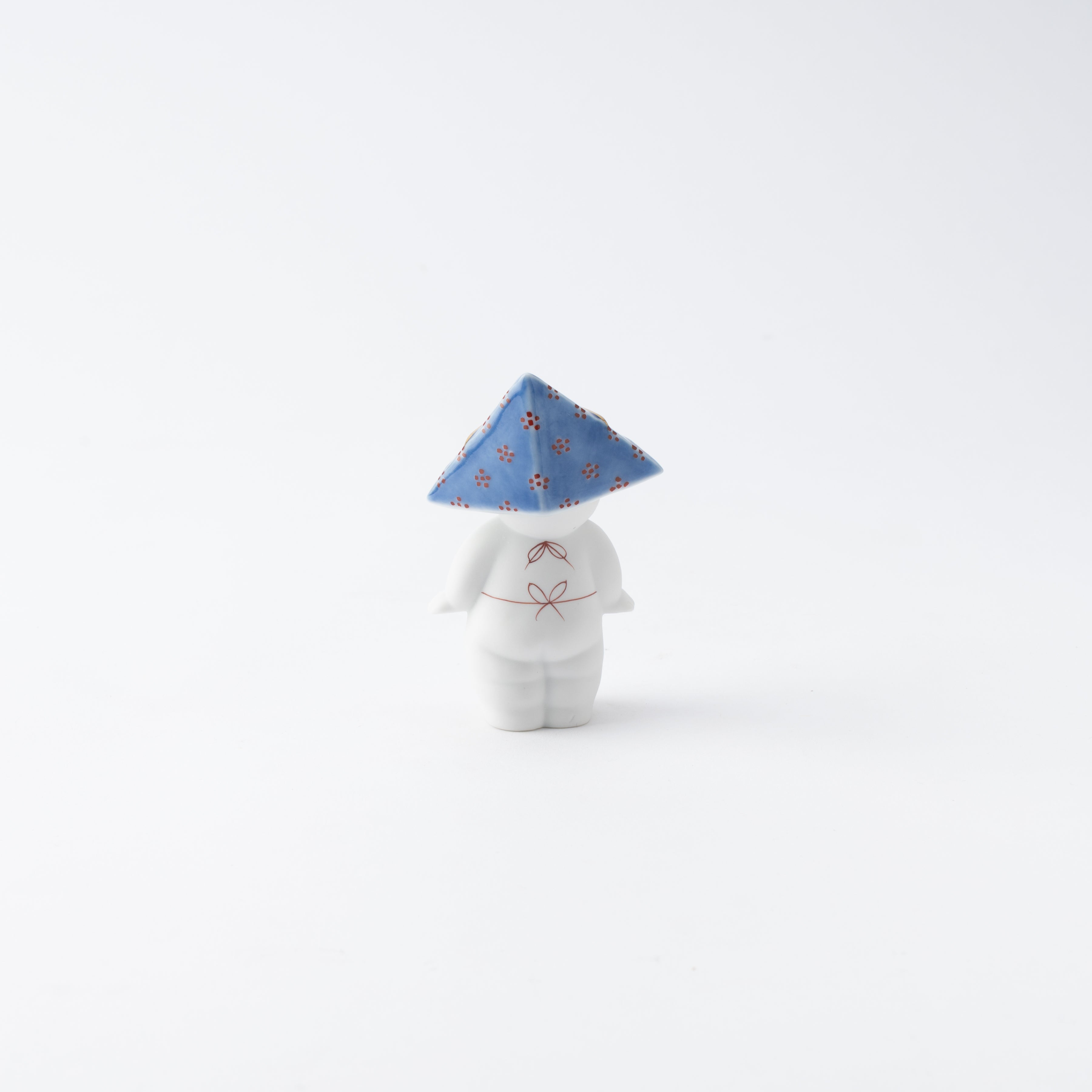
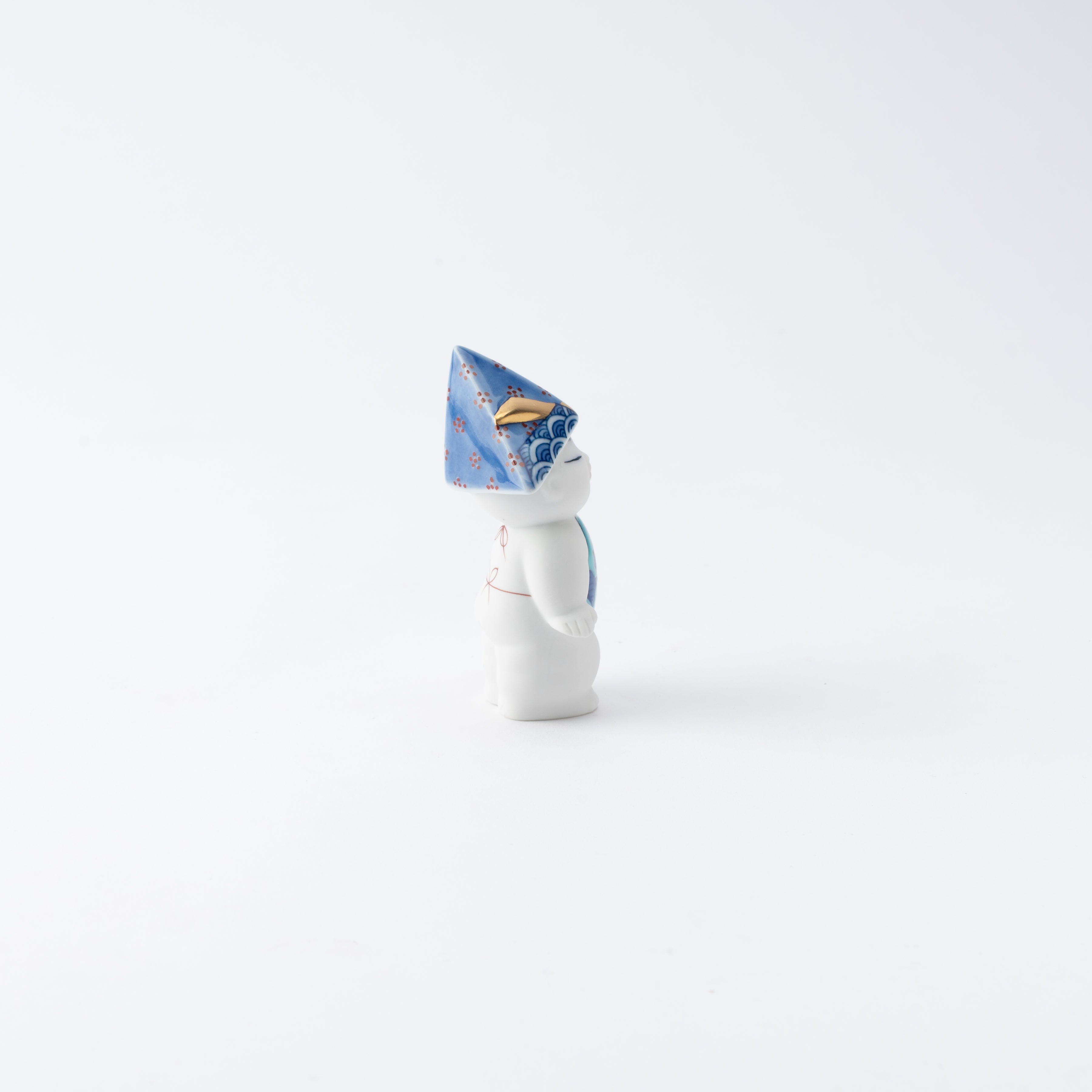

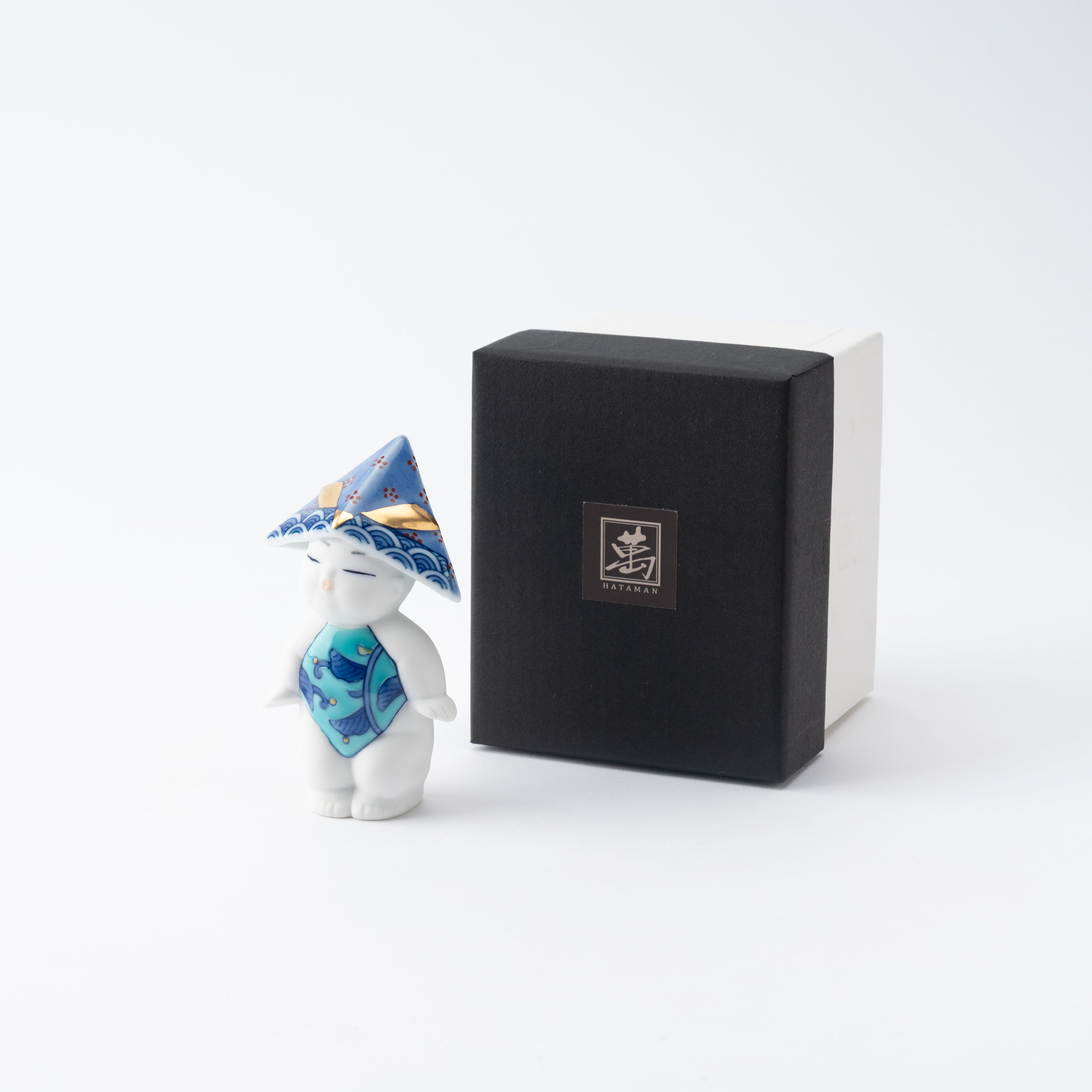
Boys' Festival Small Standing Gosho Doll
Estimated Shipping Widget will be displayed here!
This adorable doll is made in the image of a gosho doll which was a type of doll favored by the court nobles of ancient Kyoto. These dolls are characterized by their large, rounded heads, and chubby little bodies which reflect the aesthetic valued during the Edo period (1603–1868 CE).
The standing doll is posing with his arms cutely stretched out and his head slightly tilted. His translucent white skin is beautifully created with unglazed porcelain lending an air of realism.
The blue warrior helmet worn by the doll is decorated with plum blossoms and seigaiha "wave" patterns, symbolizing good fortune. The serene and innocent expression of the doll and all other decorations are hand-painted by skilled craftsmen at Hataman Touen's studio. His green apron and neatly tied ribbon also add to the cuteness of this small doll.
Originally, on Tango-no-Sekku (also known as Boys' Day), one of the five seasonal festivals from ancient China, it was customary to display decorations and offerings to drive away evil spirits and wish for good health. And following this custom dolls with warrior helmets or just the helmets are now displayed in homes to wish for the healthy growth of children.
DES DÉTAILS
| Quantity | 1 |
| Size | L 4.5 cm (1.8 in) x W 5.5 cm (2.2 in) x H 9 cm (3.5 in) |
| Material | Porcelain |
| Package Type | Paper box |
| Microwave | No |
| Dishwasher | No |
Fabricant / Marque
Hataman Touen hérite de la riche histoire et des techniques de la céramique d'Imari Nabeshima, une tradition vieille de 370 ans, tout en s'inspirant de l'esprit de la culture japonaise qui enrichit le cœur et l'âme. Leur objectif est d'incarner l'esthétique japonaise dans un contexte moderne et de partager leur histoire et leurs produits avec le monde entier.

Artisanat
La céramique de Nabeshima est un type de porcelaine fabriquée dans le four du domaine de Nabeshima, géré avec soin. Ce four, géré par le gouvernement sous la supervision directe du domaine de Saga Nabeshima, prospéra au début de l'époque d'Edo (1603-1868) .
Pendant environ 250 ans, la céramique de Nabeshima était réservée uniquement et exclusivement aux shoguns et aux seigneurs féodaux, les fours produisant des pièces exquises dans des styles comme l'iro-Nabeshima (émail sur glaçure) , l'ai-Nabeshima (un truc) , et Nabeshima Seiji (céladon) . Après la fin du système féodal, les fours furent privatisés, accueillant de nouveaux potiers et donnant naissance à ce que l'on appelle aujourd'hui la céramique d'Imari Nabeshima.

Choisir les options

















Estimated Shipping Widget will be displayed here!
Poupées et décorations japonaises
Découvrez le charme intemporel des poupées et figurines japonaises, symboles d'un patrimoine culturel et d'un savoir-faire artisanal chéris depuis des générations. Notre collection de poupées japonaises soigneusement sélectionnées met en valeur de magnifiques détails peints à la main, des silhouettes élégantes et les traditions ancestrales qui inspirent leur création.
Chaque figurine transforme n'importe quel espace en un havre de beauté raffinée, invitant à une appréciation plus profonde du savoir-faire et de l'histoire qui rendent ces trésors de poupées japonaises si enchanteurs. Que vous soyez un collectionneur chevronné ou que vous découvriez ces icônes culturelles pour la première fois, notre sélection vous promet de vous imprégner de l'esprit et de la sérénité du Japon.
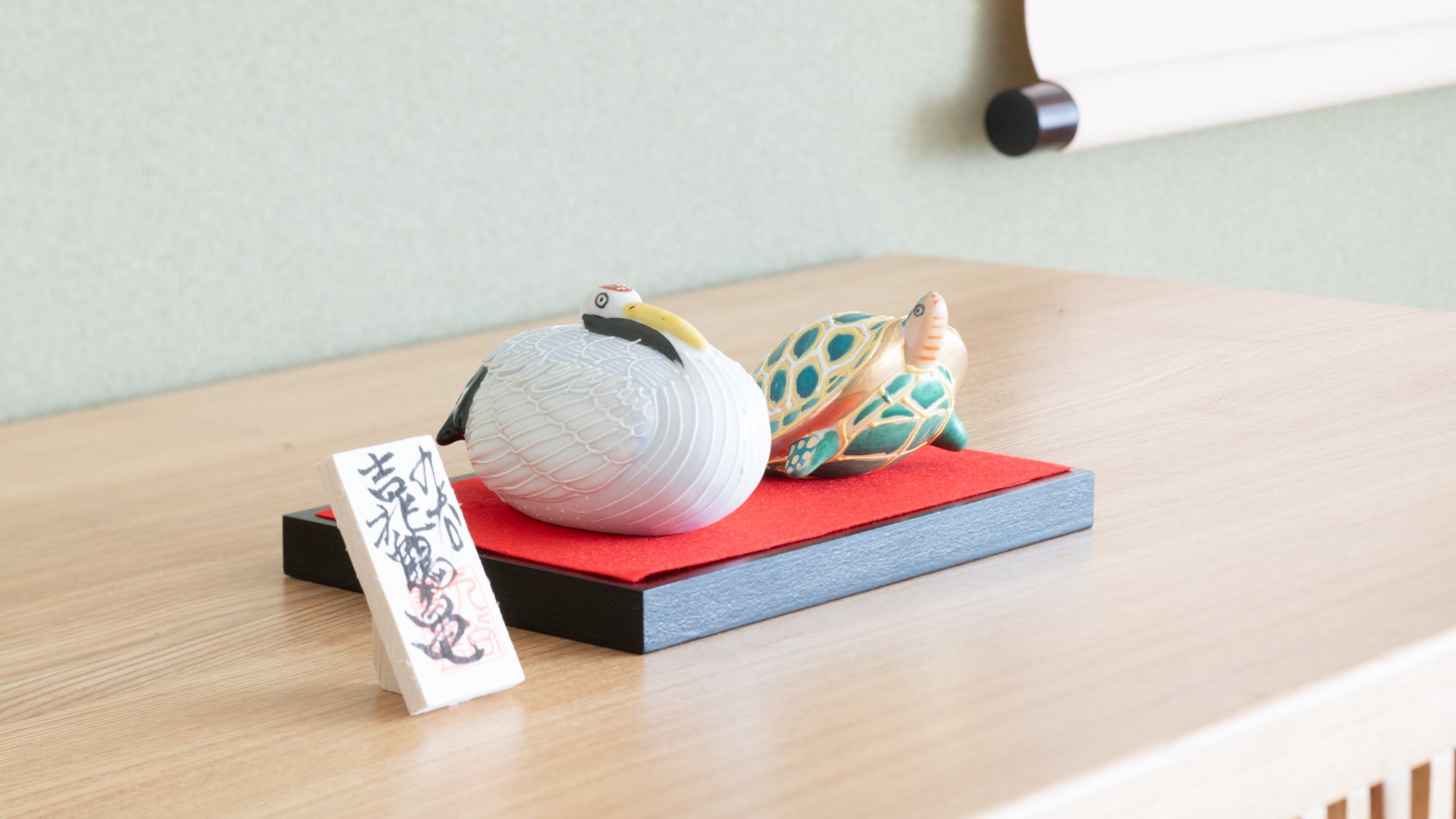
Poupées du Festival de mai
Les poupées de la fête de mai sont utilisées pour célébrer le Tango-no-Sekku, aussi appelé Journée des enfants ou Journée des garçons. Cette tradition trouve son origine à l'époque de Nara (710 apr. J. -C. ) . –794 apr. J. -C. ) . À l'époque d'Edo (1603 apr. J. -C. ) – (1868 apr. J. -C. ) , le 5 mai devint un jour férié et fut instauré sous le nom de Tango-no-Sekku. Durant cette période, la fête devint largement célébrée par les habitants d'Edo, et les poupées commencèrent à servir de décorations.
La disposition de ces poupées symbolise la célébration collective de la naissance d'un garçon par la famille, incarnant l'espoir que l'enfant évitera maladies, accidents et autres malheurs, et grandira fort et en bonne santé. Armures et casques sont exposés comme des talismans de protection corporelle, exprimant des vœux de sécurité, de santé et de croissance vigoureuse.
